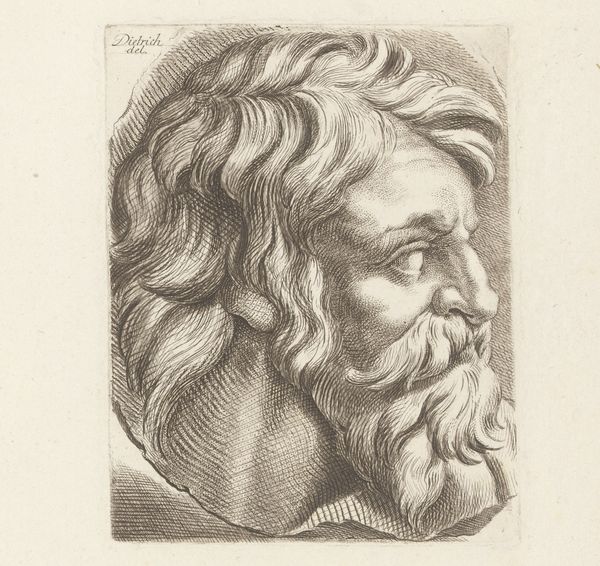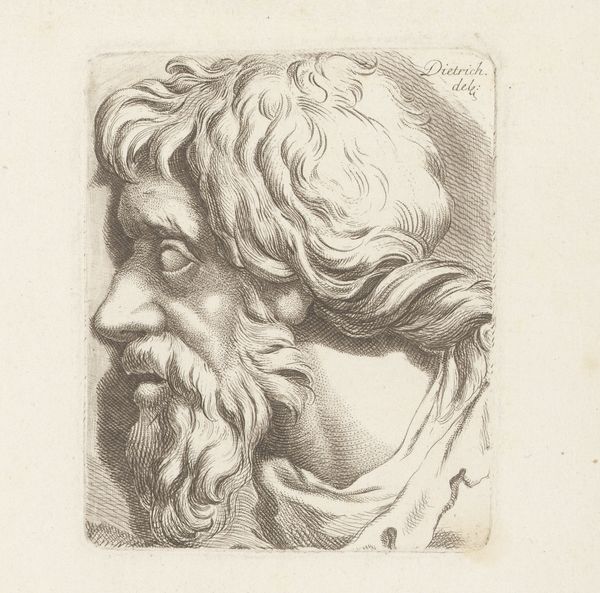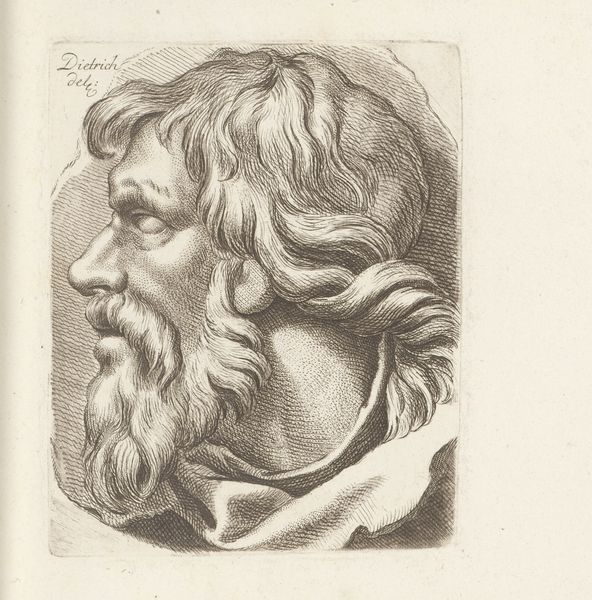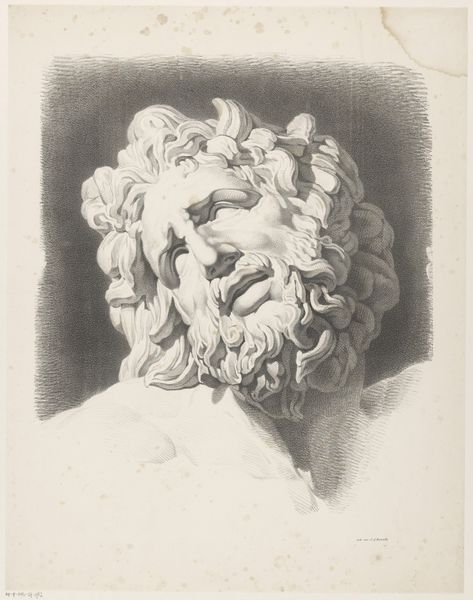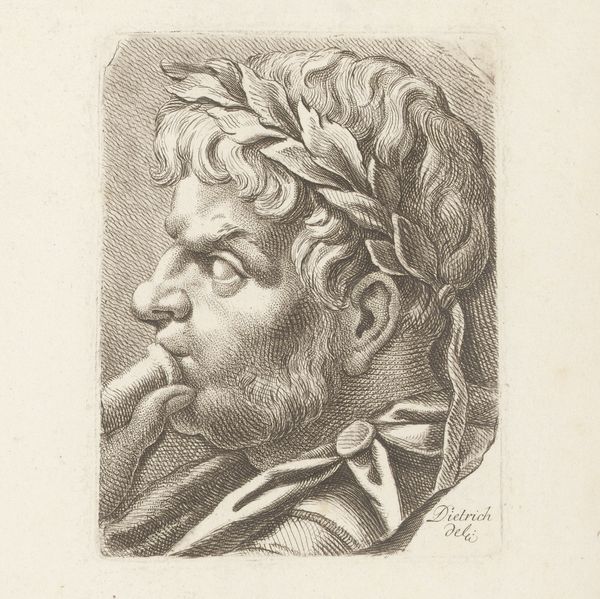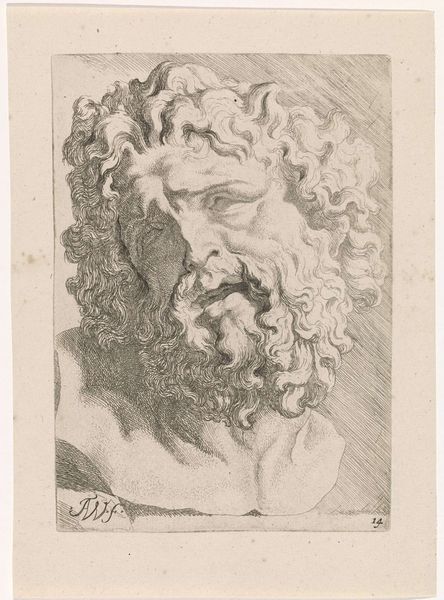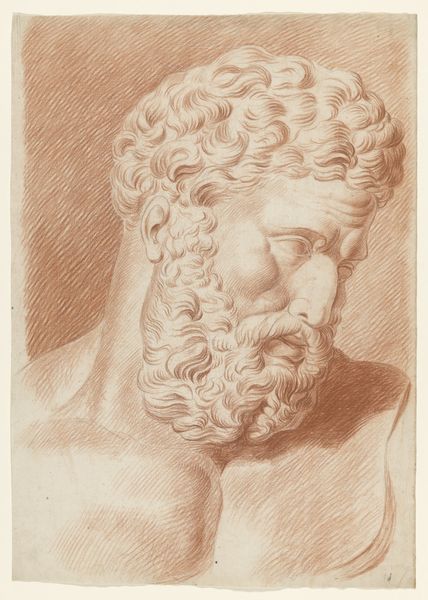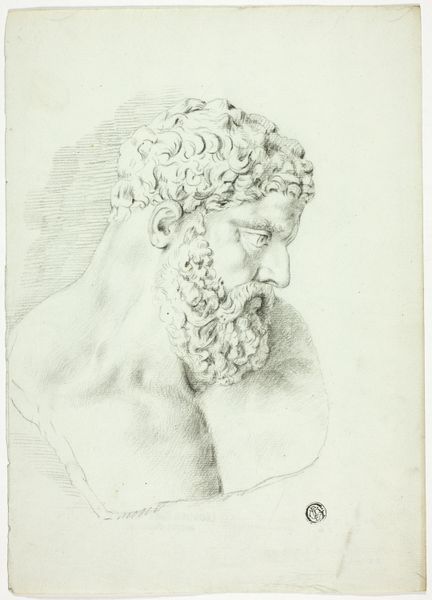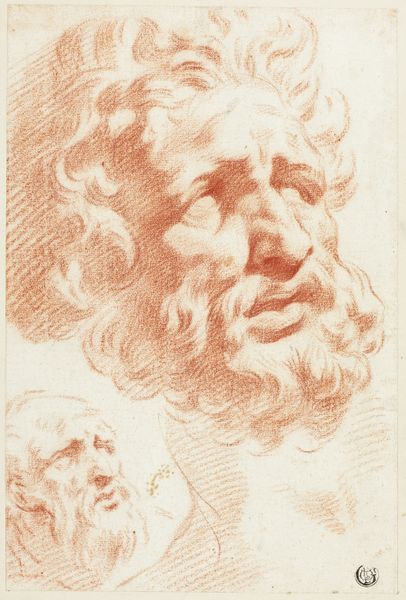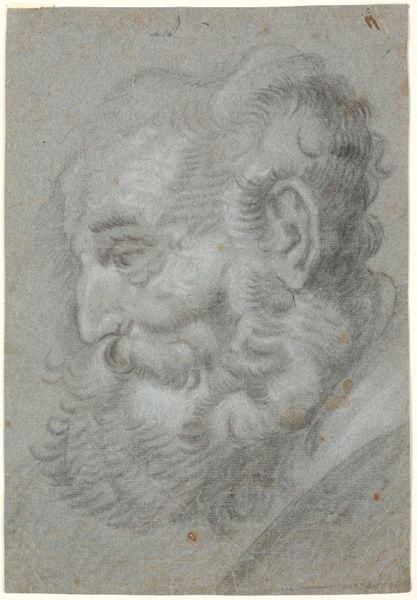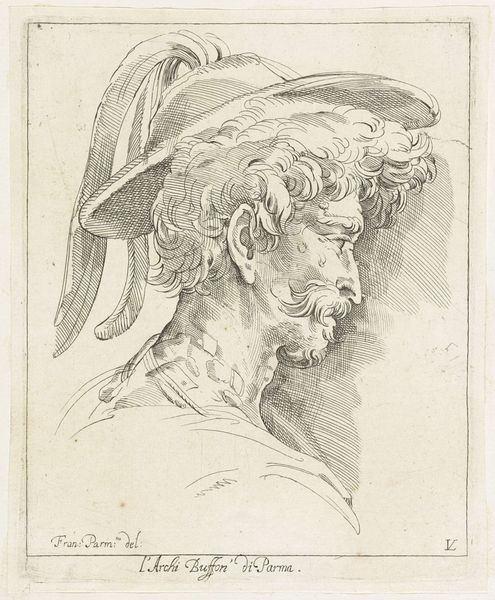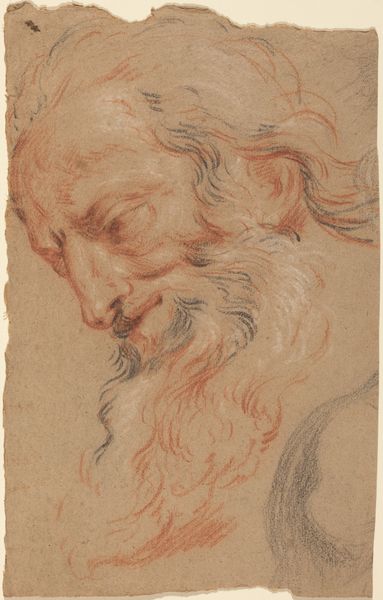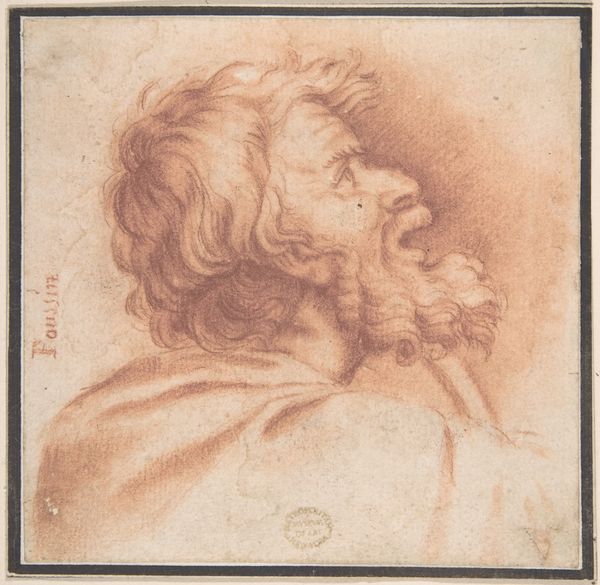
print, engraving
#
portrait
#
neoclacissism
# print
#
figuration
#
line
#
history-painting
#
engraving
Dimensions: height 108 mm, width 83 mm
Copyright: Rijks Museum: Open Domain
Curator: Here we have a print titled "Head of an Antique Sculpture" created by Carl Friedrich Holtzmann, dating roughly between 1750 and 1811. It exemplifies the neoclassical style through engraving. Editor: The most striking element is its serene mood; that slight, almost melancholic, downturn of the mouth paired with eyes closed—in either contemplation or, perhaps, even death. Curator: The prevalence of neoclassicism at that time, influenced by renewed interest in classical antiquity through discoveries in places like Pompeii and Herculaneum, saw artists reflecting ideals of order, reason and heroism. These weren’t just aesthetic choices; they mirrored the political and intellectual climate of the Enlightenment. Editor: It’s fascinating how the artist evokes those ancient ideals through line and figuration, a nod to history painting. But do you think that’s where its meaning ends? The symbol of sleep has evolved over millennia and takes on different meaning according to place and cultural memory. Curator: I believe the artist captures this historical memory through this medium of engraving. It serves to make classical antiquity more accessible, and perhaps that was Holtzmann's intention. Reproducing artworks makes it enter more private collections, spreading the word around. Editor: That certainly places this in context. But I can't help considering that the subject's expression is ambiguous enough to speak to later generations too. His quietude allows the image to speak to anyone regardless of what the intended symbol of this era was. The lack of specificity makes it even more impactful as viewers of this artwork may inject their own feeling of reflection. Curator: Your points about the symbolic layering and generational appeal certainly offer fresh insight. Perhaps Holtzmann aimed to invite introspection, leaving a dialogue open for centuries. Editor: Agreed. There’s a timeless quality achieved here, an engraving rooted in its time that speaks to ours too. It’s not just a history lesson; it's an invitation to contemplate the long arc of human feeling and artistry.
Comments
No comments
Be the first to comment and join the conversation on the ultimate creative platform.
